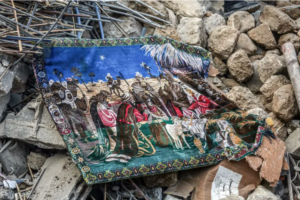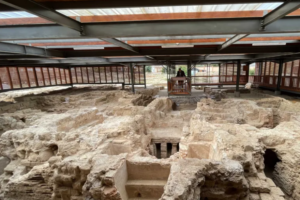The Rich Heritage of Palestinian Culture
The Rich Heritage of Palestinian Culture
Palestinian heritage stands as an enduring source of inspiration, deeply rooted in the country’s history and cultural richness. It serves as a powerful unifying force, connecting Palestinians across religious and ethnic lines. Preserving and reviving this heritage has become a sacred cultural mission, passed down from generation to generation. It reflects the resilience and unity of the Palestinian people, transcending geographical boundaries and reaching global audiences.
Throughout more than seven decades of struggle, Palestinian heritage has been a cornerstone of resistance and identity preservation. It remains an unbreakable tool in the pursuit of reclaiming historical rights and overcoming the challenges posed by the Israeli occupation. Despite continuous attempts to erase the cultural identity of the land since the mid-20th century, the creative output of Palestinian artists, past and present, stands firm as a testament to its resilience.
Palestinian Cultural Heritage
Palestine’s cultural and archaeological legacy is unparalleled, with approximately 12,000 historical sites across the West Bank, including East Jerusalem, and the Gaza Strip. The land is rich with sacred sites, forming an integral part of its cultural fabric. As the cradle of the three Abrahamic religions, Palestine, particularly Jerusalem, holds profound spiritual significance. This convergence of faiths has given rise to a unique blend of civilizations, cultures, and traditions.
The cultural influences on Palestine date back to prehistoric times and span various historical eras. The Byzantine period (4th century CE) left behind churches like those in Burqin and Aboud, which still stand in the West Bank. During the Umayyad period (661–750 CE), early Islamic architecture flourished, marked by luxurious living standards reflected in palatial complexes with mosques, courtyards, and gardens.
The Mamluk era (1250–1517) introduced a diverse array of architectural styles, particularly in religious buildings. Jerusalem, in particular, thrived with the establishment of Islamic schools and Sufi lodges. Public structures like caravanserais (inns for travelers), markets, and bathhouses became integral to urban life.
Under Ottoman rule (1517–1917), the region saw significant settlement and cultural development, with many villages bearing the influence of Ottoman traditions. Following the fall of the Ottoman Empire and the British Mandate in the early 20th century, archaeological work gained prominence. In 1929, the British enacted an Antiquities Law and led excavation projects, though Palestinians were largely excluded from participating due to a lack of resources and expertise.
Challenges to Palestinian Heritage
The Nakba of 1948, which resulted in the establishment of the state of Israel and the displacement of hundreds of thousands of Palestinians, marked a turning point in the systematic destruction of Palestinian cultural heritage. Archaeological sites, historical landmarks, and cultural assets were targeted in an effort to erase Palestinian ties to the land and establish a narrative favoring Israeli claims.
Israeli authorities restricted Palestinians from conducting archaeological research, neglecting evidence from periods that did not align with their narrative, such as Islamic, Byzantine, and medieval eras. Hundreds of sites were looted, and the illegal trade of cultural artifacts flourished under the occupation.
Despite these challenges, the 1970s witnessed a resurgence of Palestinian nationalism. Efforts to preserve local heritage intensified, encompassing historic buildings, artifacts, ethnographic items, and personal belongings. This movement sought to safeguard what remained of Palestine’s cultural identity and counteract the loss caused by decades of conflict and occupation.
Conclusion
Palestinian heritage is more than a collection of ancient artifacts and traditions—it is a living testament to the resilience, unity, and cultural richness of its people. While attempts to erase this legacy persist, the unyielding creativity of Palestinian artists, writers, and cultural advocates continues to shine as a beacon of resistance and pride, ensuring that this heritage remains vibrant for generations to come.




0 comments